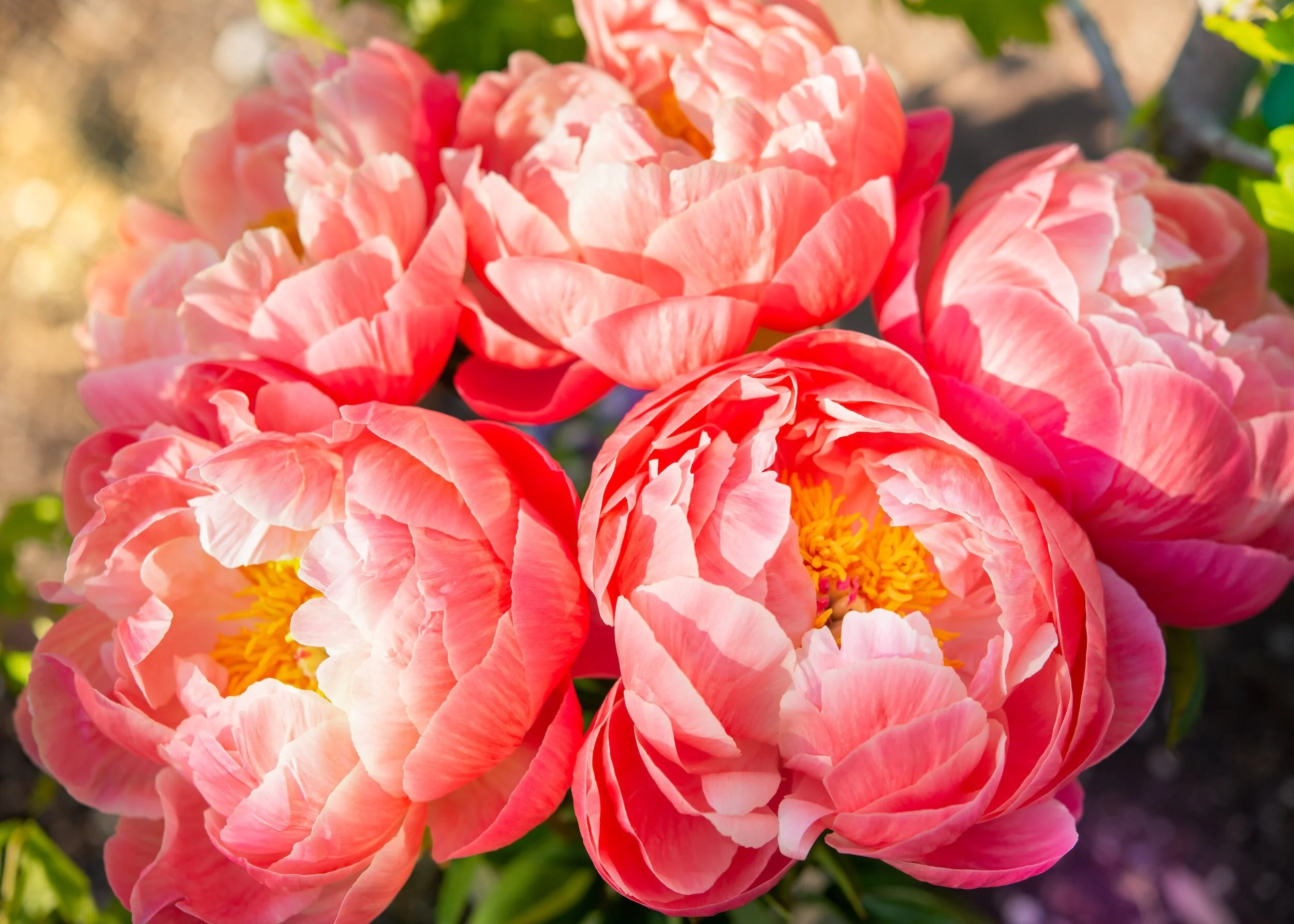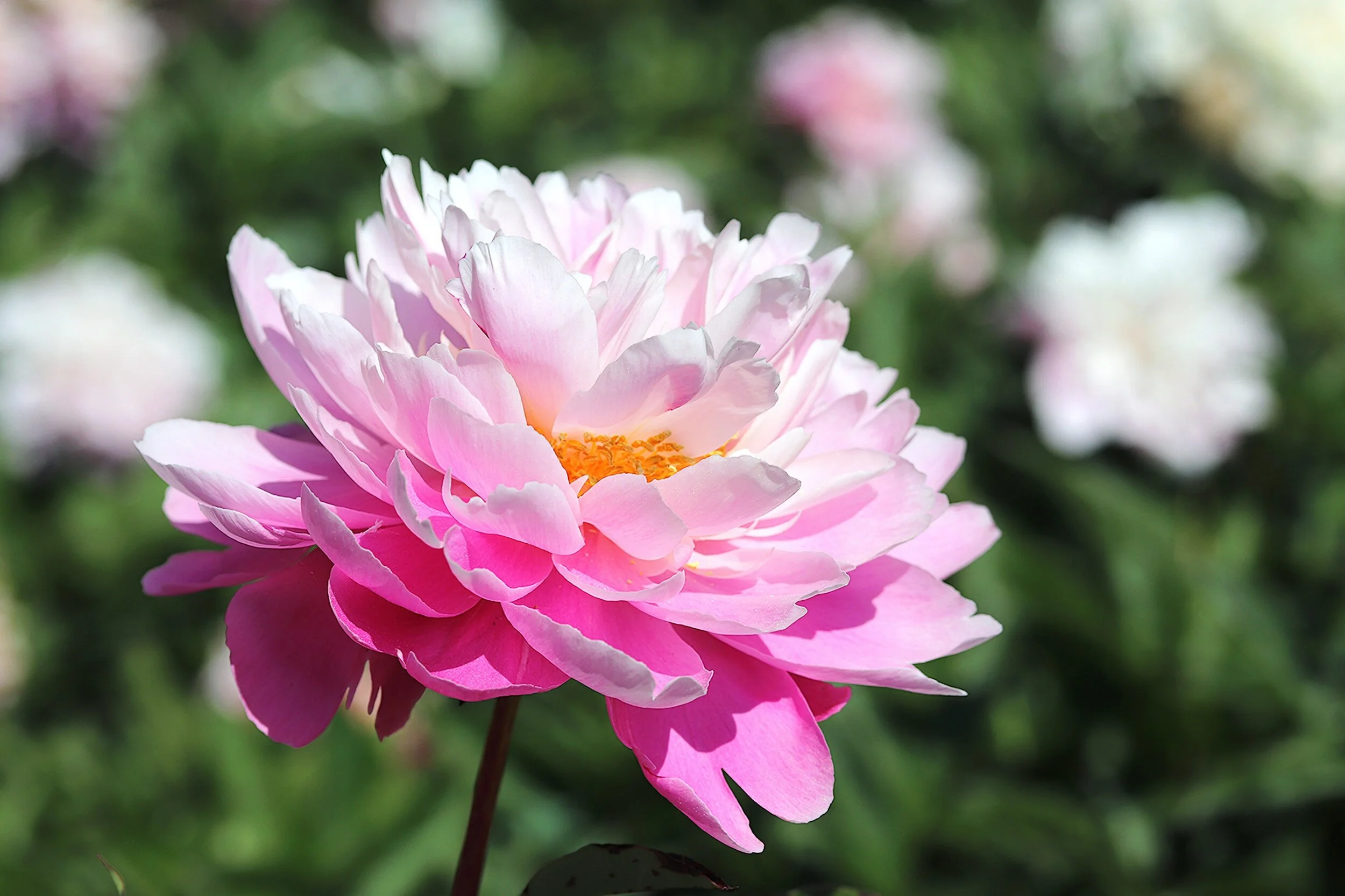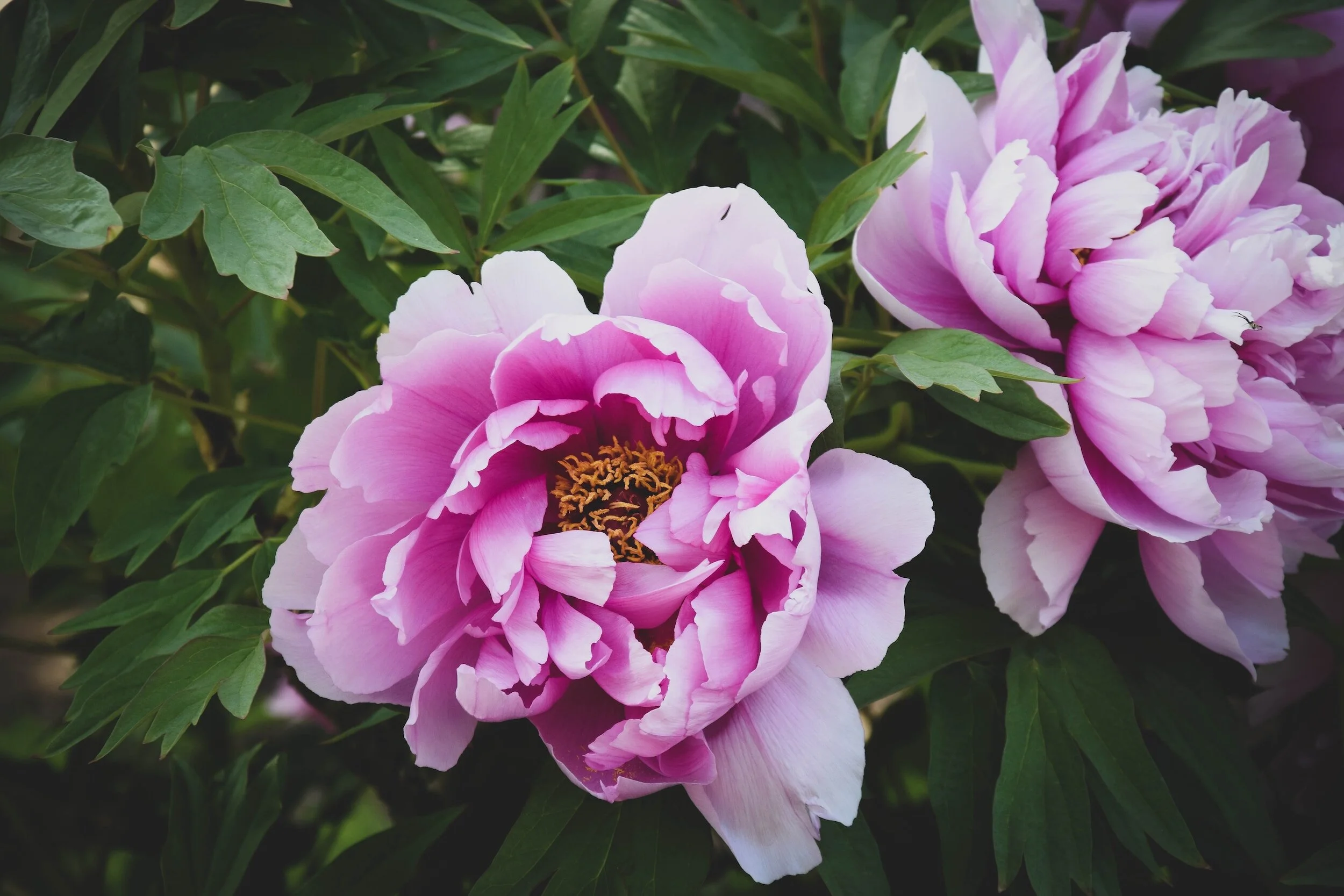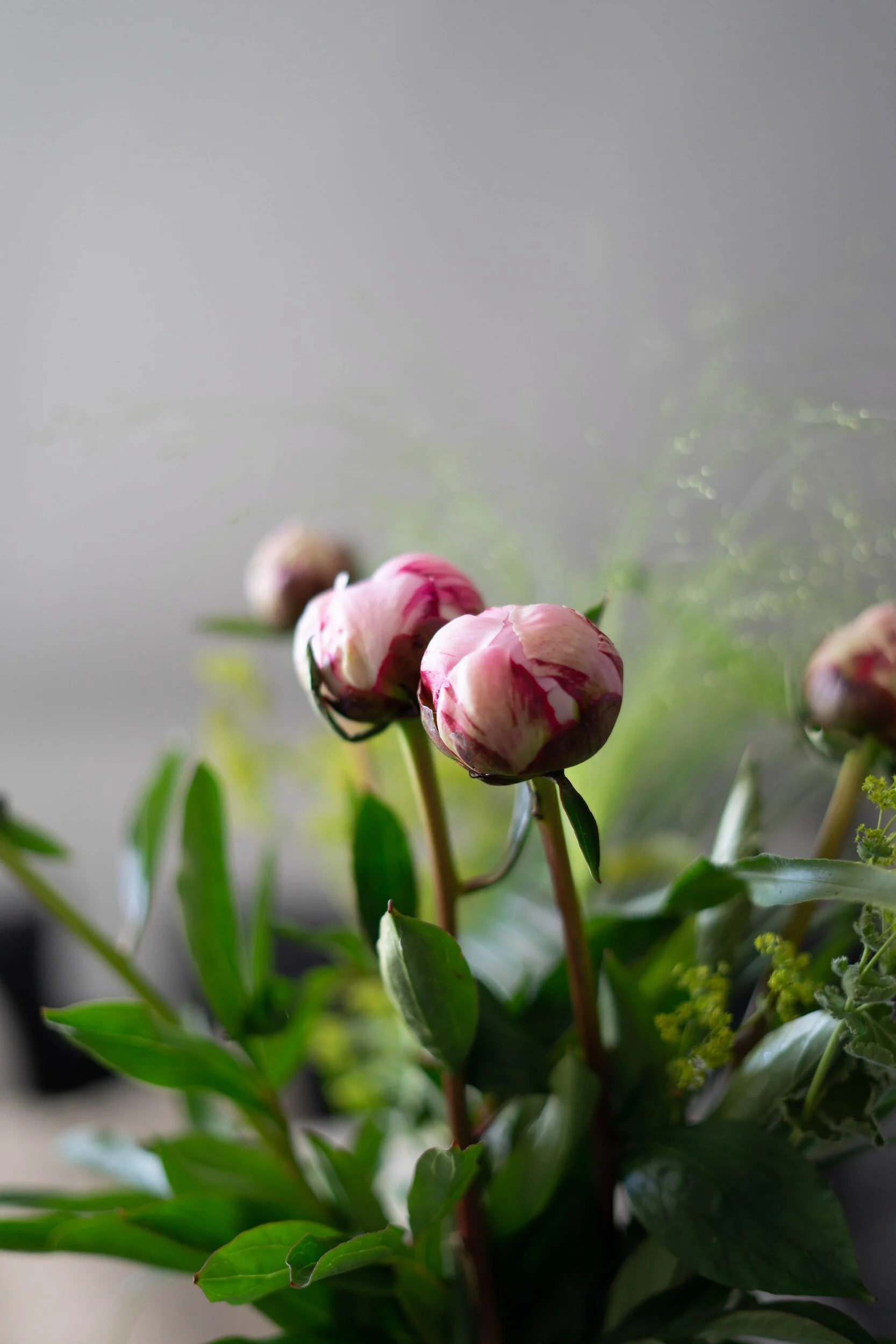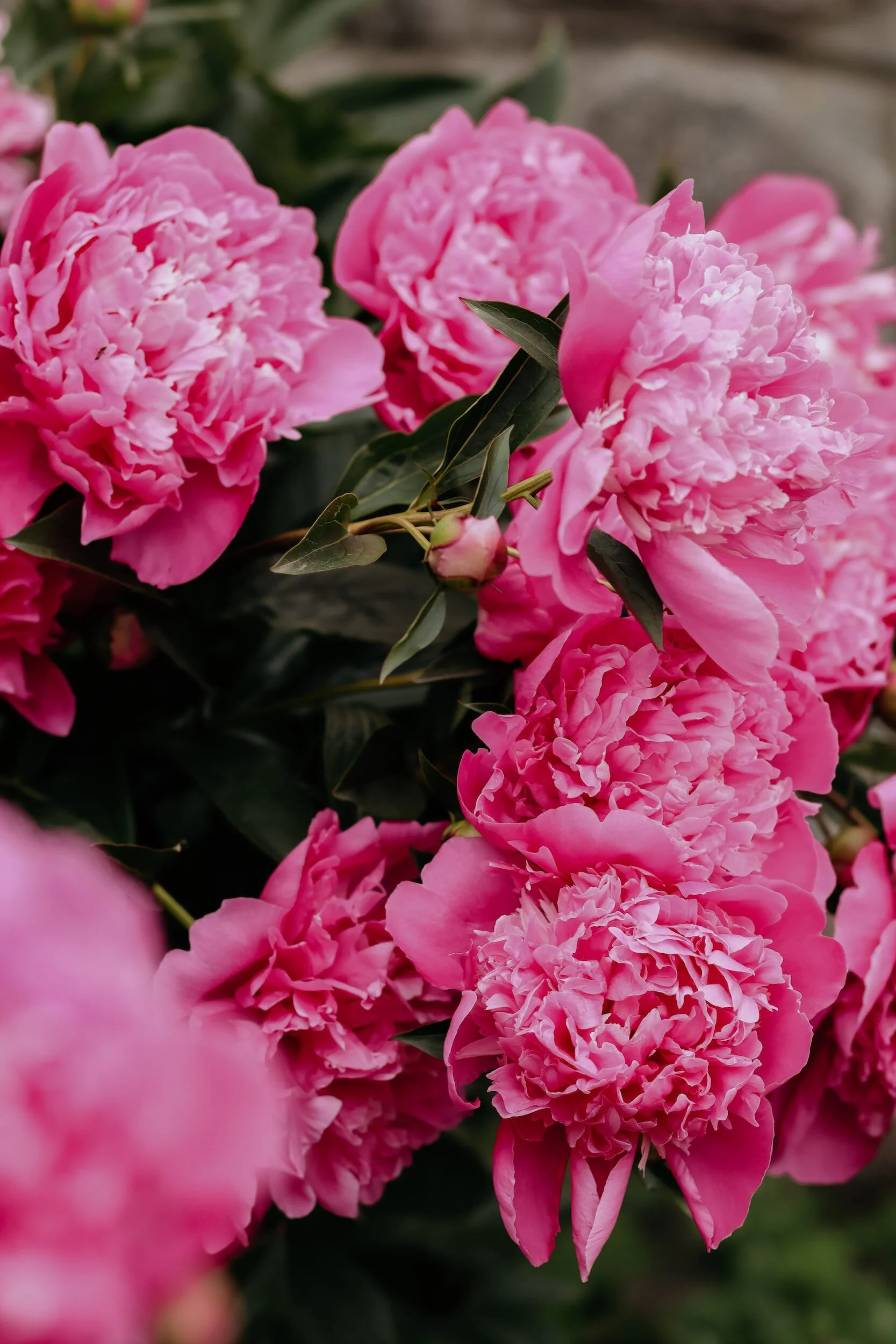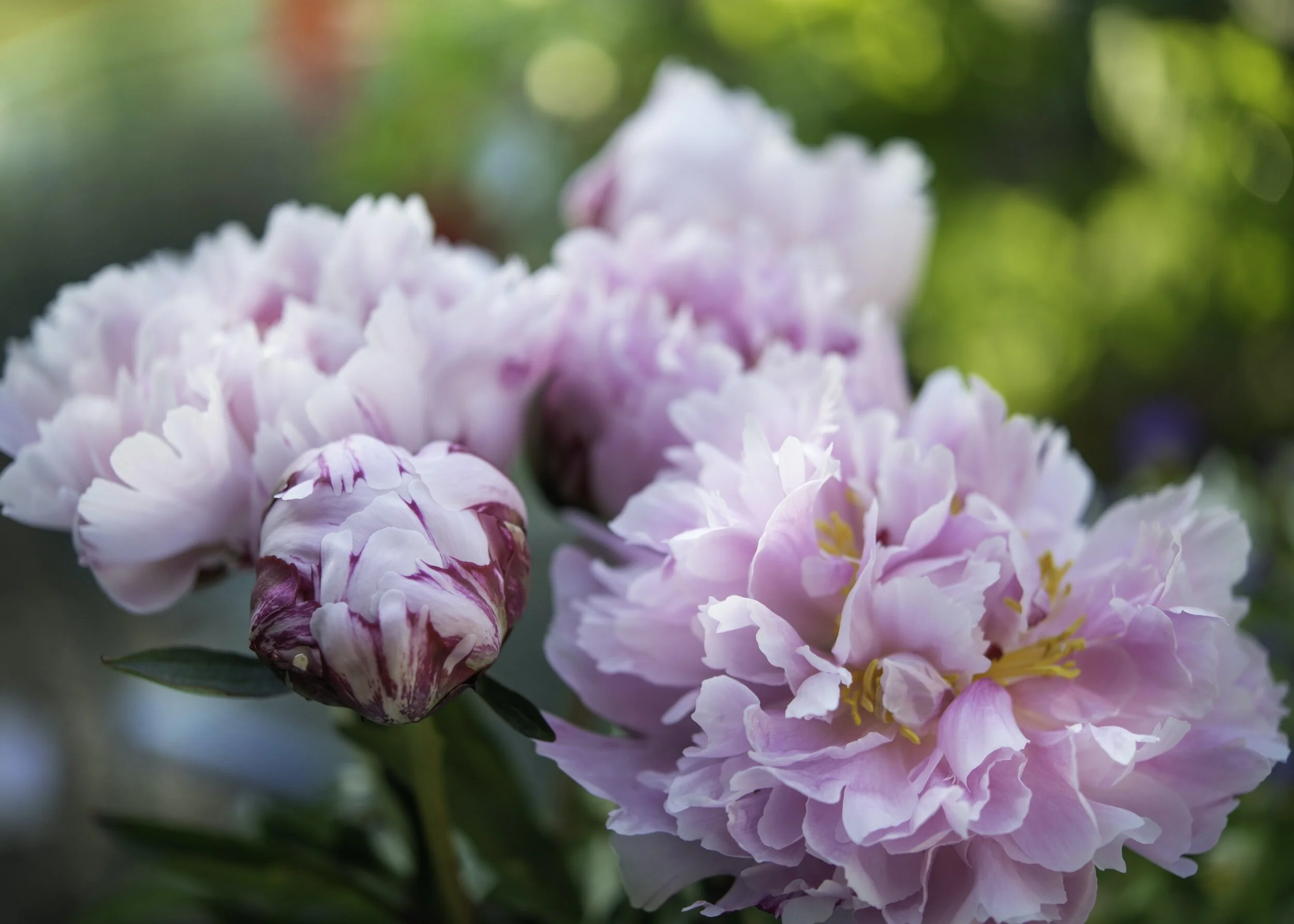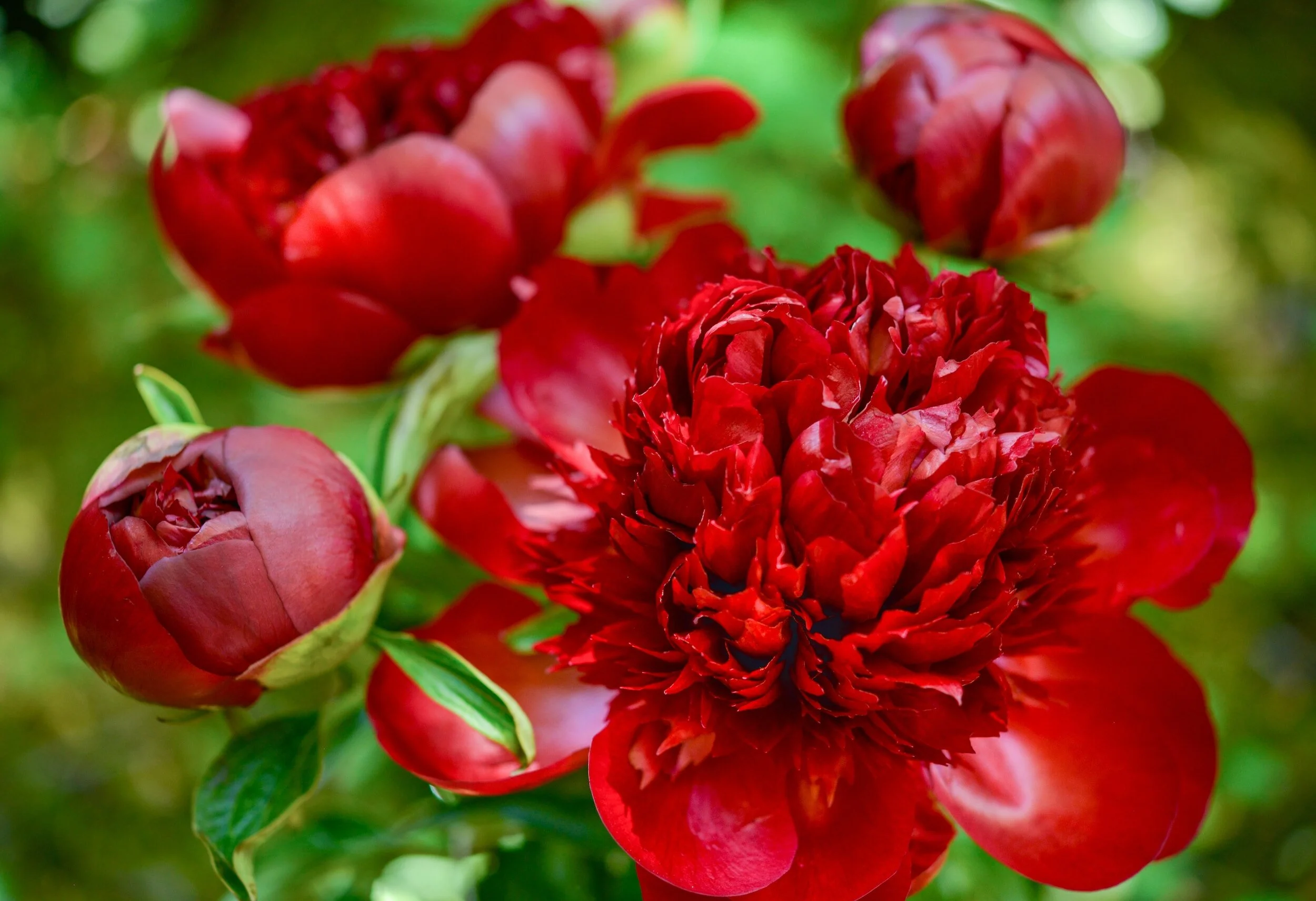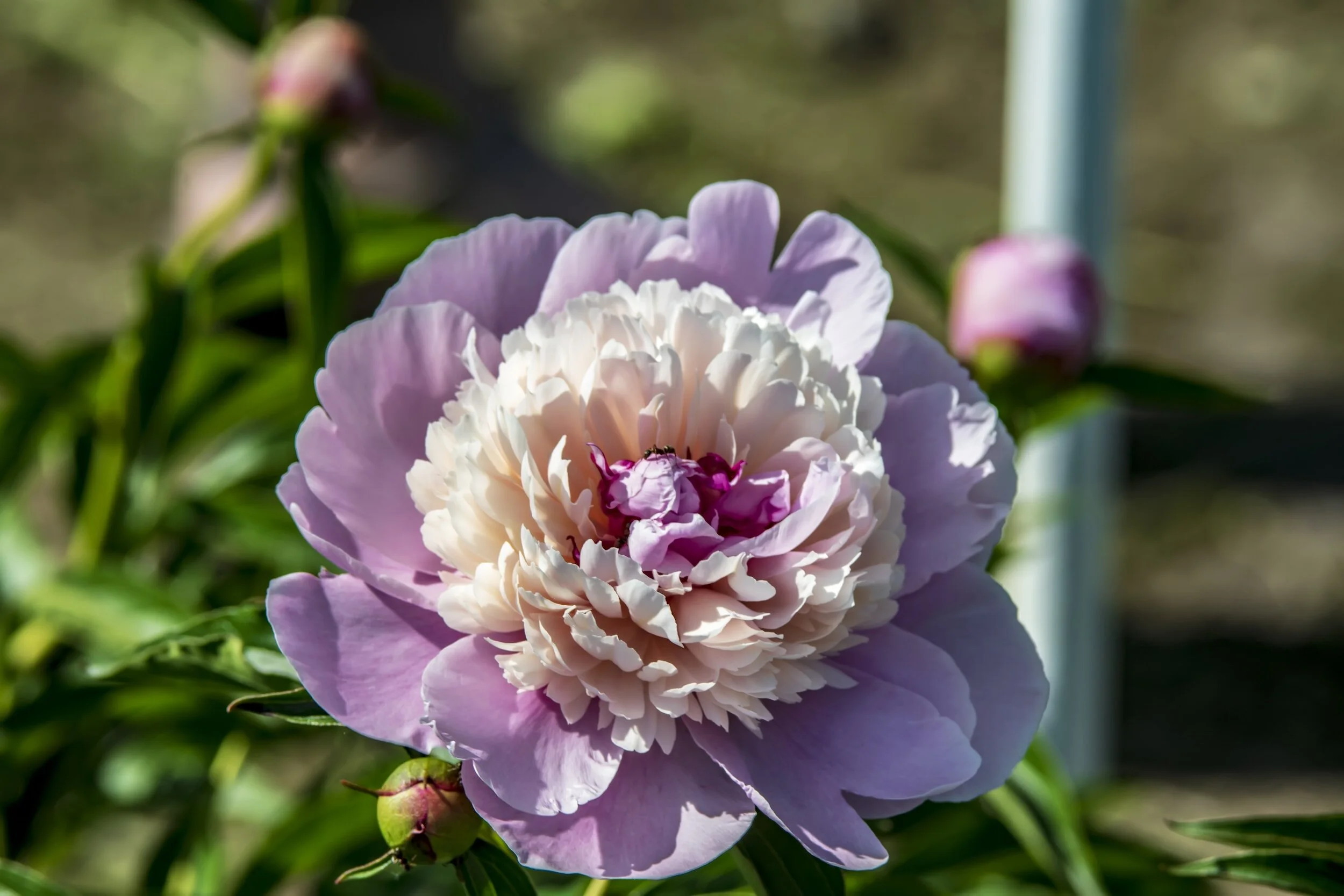Can You Grow Peonies in Pots?
This article has links to products that I may make commission from.
Gardening can be an immensely rewarding experience, and growing peonies, with their lush blooms and captivating fragrance, brings a unique joy. However, not everyone has the luxury of an expansive garden or fertile ground.
This raises the question "Can you grow peonies in pots?" The answer might surprise you, and it will undoubtedly delight those with a fondness for these stunning flowers.
Whether you're an urban dweller with limited outdoor space, a gardening enthusiast looking for a new challenge, or you simply love the idea of vibrant peonies brightening up your home, this guide is for you.
Drawing upon expert advice from the American Peony Society, we'll explore everything from choosing the right peony varieties for pot cultivation to providing adequate care for a thriving peony plant in a container.
Welcome to the world of growing peonies in pots.
To learn more about growing peonies, check out my guides:
Why Grow Peonies in Pots?
Peonies, with their opulent blooms and appealing fragrance, are a treasured feature in many gardens.
But why consider growing peonies in pots when they can thrive in the ground?
Here are several compelling reasons:
1. Space Optimization
Not all gardeners have access to spacious gardens. Container gardening allows those with small yards, patios, balconies, or even a sunny indoor spot to enjoy the beauty of peonies.
2. Mobility
One major advantage of container peonies is their mobility. You can rearrange your pots for aesthetic purposes, move the peonies to optimal sunlight conditions, or bring them indoors during harsh weather conditions.
3. Soil Control
Peonies have specific soil needs. They prefer well-drained, fertile soil with a neutral to slightly alkaline pH. When growing in pots, you can curate the perfect soil mix, ensuring your peonies have the ideal growing conditions.
4. Pest and Disease Management
Pests and soil-borne diseases can be better managed in containers. Isolating the affected plant is easier, and preventative measures can be more effectively applied.
5. Versatility and Experimentation
Pots provide an opportunity to experiment with different peony varieties without committing to a particular ground location. You can also play around with pot designs, creating a dynamic and versatile aesthetic.
6. Indoor Gardening
Lastly, growing peonies in pots allows for indoor cultivation. Indoor peonies can bring a touch of nature into your home, adding beauty and improving air quality.
Growing peonies in pots does require specific attention to details such as pot size, soil mix, watering, and placement, but with these considerations in mind, container peonies can be a practical and delightful addition to your gardening activities.
Peonies definitely need support while growing.
Here is the peony cage I recommend to support your blooms:
Choosing the Right Peony Varieties for Pots
When you're considering growing peonies in pots, choosing the right variety is critical to your success.
Peonies come in a wide range of types, each with its own growth habits, size, and care requirements.
Here are a few tips on selecting the best peony varieties for pot cultivation:
1. Size Matters:
Peonies can vary significantly in size, with some varieties growing up to 3 feet tall and wide.
When choosing a peony variety for a pot, look for dwarf or compact varieties.
These smaller peonies are better suited to life in a container and won't outgrow their space quickly.
2. Check Growth Habits
Some peonies have growth habits that make them more suitable for container gardening.
For example, intersectional peonies (also known as Itoh peonies), a cross between tree and herbaceous peonies, tend to have a more compact, rounded growth habit that works well in pots.
3. Consider Bloom Time and Flower Form:
Peonies bloom at different times in the spring and early summer.
By choosing varieties with different bloom times, you can have a succession of flowers in your pots.
Also, peonies have different flower forms - single, semi-double, double, anemone, and Japanese. You might choose the flower form that you find most appealing.
4. Hardy Varieties:
Some peony varieties are more tolerant of the temperature fluctuations that can occur in pots, especially during winter.
Look for hardy varieties that are known to withstand colder conditions.
5. Look for Recommendations:
Below is my curated list of the best peony varieties to grow in pots.
Also, peony societies, such as the American Peony Society, often have recommendations for peony varieties that perform well in pots.
Choosing the right peony variety for pot cultivation can make the difference between a struggling plant and a thriving one. With careful selection, you can enjoy the spectacular display of peonies in your garden or home, regardless of the space available.
My recommended best peony varieties for growing in pots:
To learn more about growing flowers in pots, check out my guides:
Container Selection for Your Peonies
Selecting the right container is a crucial step in the process of growing peonies in pots.
The container will not only act as a home for your peony plant but can also contribute to the overall aesthetics of your gardening space.
Here are some tips to keep in mind when choosing a container for your peonies:
1. Size:
Peonies have a large root system and need space to grow.
Choose a pot that is at least 18 inches in diameter and similarly deep.
This will provide sufficient space for the roots to expand and the plant to thrive.
This beautiful outdoor pot is perfect for peonies:
2. Material:
Pots can be made from a variety of materials, including plastic, terracotta, ceramic, or wood.
Each material has its own pros and cons. Plastic pots are lightweight and retain moisture well but can degrade over time in sunlight.
Terracotta pots are heavier and porous, allowing for better breathability, but they can dry out quickly and may crack in cold weather.
Ceramic and wood pots are also good options, depending on your aesthetic preferences and budget.
3. Drainage
Good drainage is crucial for peonies to prevent waterlogging, which can lead to root rot.
The container you select should have drainage holes at the bottom to allow excess water to escape.
If your preferred pot doesn't have holes, you can drill some yourself.
4. Weight:
Consider the weight of the pot, both empty and when filled with soil and a mature plant.
If you plan to move your peony around, a lighter pot may be beneficial. However, a heavier pot can provide stability and prevent toppling over in windy conditions.
5. Style:
Lastly, consider the style and color of the pot. The pot is not only a container for your plant but also an aspect of your garden decor.
Choose a pot that complements your peony and suits your personal style.
Remember, the right container for your peony plant can greatly impact the health and success of your plant. By considering these factors, you can ensure your container peonies will have a thriving environment to grow in.
Preparing the Best Soil Mix for Peonies
A crucial factor in the success of your container peonies is the soil mix.
Peonies prefer well-drained, fertile soil with a neutral to slightly alkaline pH.
When preparing your soil mix for peonies in pots, consider the following elements:
1. Good Quality Potting Soil:
Begin with a high-quality, well-draining potting soil as your base.
These mixes often contain a blend of materials like compost or well-rotted manure, and perlite or vermiculite to improve drainage.
Here is the organic potting soil I recommend using:
2. Organic Matter:
Peonies appreciate fertile soil. You can enrich your soil mix by adding organic matter such as well-rotted compost or well-aged manure.
This not only enhances the soil's nutrient content but also aids in moisture retention and improves soil structure.
3. Drainage Material:
To improve drainage, incorporate coarse materials into your soil mix.
These could include coarse sand, perlite, or small bark chips. This helps prevent waterlogging and promotes healthy root development.
4. pH Adjustments:
Peonies prefer a slightly acidic to neutral pH, around 6.5 to 7.0.
If the pH is too low (acidic), add garden lime to raise it. If it's too high (alkaline), a bit of sulfur can help to lower it.
You can test your soil's pH with a simple kit.
Here is the one I recommend:
5. Fertilizer:
A slow-release granular fertilizer can be added to the soil mix at planting time. This will provide a steady supply of nutrients over time.
Alternatively, you can add compost to the mix and then top-dress with compost or apply a liquid fertilizer regularly during the growing season.
Check out my full guide to How to Fertilize Peonies for Spectacular Blooms.
In summary, preparing the best soil mix for peonies is all about balance. You want to create a fertile environment that retains some moisture but also drains well to prevent waterlogging.
With the right soil mix, your peonies will have the nutrients and conditions they need to thrive.
Planting Bare Root Peonies in Pots: A Step-by-Step Guide
The act of planting peonies, whether it's a bare root or a potted plant, is a process that requires precision and care.
Here's a step-by-step guide to help you plant bare root peonies in pots:
1. Choose the Right Time:
Spring or early fall is the best time to plant bare root peonies.
The soil temperatures are optimal during these periods, facilitating root development.
2. Prepare the Container:
Ensure your selected container has sufficient drainage holes.
To further improve drainage, you can add a layer of coarse gravel or broken terracotta pieces at the bottom of the pot before adding soil.
3. Prepare the Soil:
Use the soil mix prepared as per the guidelines shared above.
Fill the pot about one-third full with the prepared soil.
4. Inspect the Root:
Before planting, check the bare root peony for any signs of disease or damage.
Trim away any rotten or broken parts. The healthiest roots are firm and have several strong, pinkish buds.
5. Position the Peony Root:
Place the peony root so the eyes (small, red-colored buds on the crown of the root) are facing upwards.
Position the root such that these eyes will be approximately 2 inches below the soil surface.
6. Fill the Pot:
Carefully backfill the pot with soil, ensuring that the peony eyes remain at the right depth.
7. Watering:
After planting, water thoroughly. The soil should be saturated but not waterlogged.
8. Placement:
Place the pot in a location that receives full sun (at least six hours of direct sunlight per day).
9. Care:
Keep the soil evenly moist, watering when the top inch of soil feels dry.
Overwatering can lead to root rot, so be sure to check soil moisture levels before watering.
For more watering tips, check out my guide How to Use Watering Globes.
10. Patience:
Peonies are slow to establish but long-lived, so patience is necessary.
It may take a couple of years before your peony plant starts to produce its stunning, fragrant flowers, but it's worth the wait!
With these steps, you can successfully plant a bare root peony in a pot. Remember, peonies require some patience but will reward your efforts with their spectacular display of flowers over time.
Caring for Potted Peonies Post Planting
After successfully planting your peonies in pots, it's time to focus on maintaining optimal conditions for their growth and development.
Here are some crucial care tips to keep your potted peonies happy and healthy:
1. Watering:
Peonies prefer evenly moist soil, but they don't tolerate waterlogged conditions. Check the soil's top inch: if it's dry, it's time to water.
Water deeply, allowing the water to soak through to the roots, but ensure the pot drains well afterward.
2. Sunlight:
Place your potted peonies where they can get at least six hours of full sun each day.
If you're growing peonies indoors, place them near a south-facing window or supplement with grow lights.
3. Fertilizing:
Peonies aren't heavy feeders, but they appreciate a boost of nutrients, especially in the potting environment.
Apply a balanced, slow-release granular fertilizer in the spring as new growth emerges, or use a diluted liquid fertilizer every couple of weeks during the growing season.
Check out my full guide to How to Fertilize Peonies for Spectacular Blooms.
4. Pruning:
After the foliage has died back in the fall, prune your peonies back to soil level.
This helps prevent overwintering diseases and pests and promotes healthier growth in spring.
5. Dealing with Pests and Diseases:
Monitor your peonies for common pests like thrips or diseases like botrytis.
If detected, treat promptly with appropriate methods.
With these care tips, you can help ensure your potted peonies stay healthy and produce abundant, fragrant blooms. Remember, growing peonies in pots requires some additional attention, but the beauty of these flowers makes it all worthwhile.
Overwintering Peonies in Pots and Transplanting Peonies
As perennial plants, peonies need to endure the winter months to return vibrantly in the spring.
When grown in-ground, peonies are quite winter-hardy, but those grown in pots need some extra attention. Similarly, while peonies prefer to remain in the same place once planted, there may be instances where transplanting becomes necessary.
Here's what you need to know about both processes:
Overwintering Peonies in Pots
Peonies enter a period of dormancy in winter, which is crucial for their spring growth.
However, potted peonies are more susceptible to freezing temperatures due to their exposed root systems.
Here's how you can help your potted peonies through winter:
1. Reduce Watering: As the plant's growth slows down in late fall, reduce watering.
2. Prune Back: Once the leaves have yellowed and died back, prune the plant down to soil level to prevent any potential diseases from overwintering.
3. Insulate the Pot: To protect the pot and roots from freezing, you can wrap the pot with bubble wrap or burlap.
4. Relocate the Pot: If possible, move the pot to an unheated garage or shed for the winter.
If that's not an option, place the pot against the house or under a porch to protect it from harsh winter winds.
5. Mulch the Top: You can also add a layer of mulch or straw on top of the soil in the pot to add an extra layer of insulation.
Check out my guide: The Best Alternatives to Traditional Mulch for Your Garden.
Transplanting Peonies
Transplanting peonies should be avoided if possible, as they prefer to be left undisturbed.
However, if you must move your peony due to reasons like inadequate sunlight or overcrowding, here's a step-by-step guide:
1. Choose the Right Time: Fall is the best time to transplant peonies.
2. Prepare the New Pot: Ensure the new pot is prepared with an appropriate soil mix and drainage, just like you would when planting a new peony.
3. Remove the Peony: Carefully remove the peony from its current pot. Try to keep the root system intact to minimize stress to the plant.
4. Plant in New Pot: Plant the peony in the new pot at the same depth it was in the old pot. The buds (eyes) should be about 2 inches below the soil surface.
5. Water and Care: After planting, water thoroughly and place the pot in a location that gets full sun. Continue to care for the peony as usual.
Transplanting peonies in pots and overwintering them might require extra effort, but with these steps, you can help ensure your peonies thrive no matter the circumstances. Remember, patience and care are the keys to growing successful potted peonies.
Can You Grow Peonies in a Pot Indoors?
Growing peonies indoors can be a bit of a challenge, but it's not impossible. With the right conditions and care, you can enjoy these beautiful, fragrant blooms even inside your home. Here's what you need to know:
Light Requirements
Peonies need full sun to bloom, which translates to at least six hours of direct sunlight each day. If you're growing peonies indoors, they need to be placed near a south-facing window to receive as much sunlight as possible. If sufficient natural light isn't available, you may need to supplement with grow lights.
Temperature
Peonies are cold-hardy plants and need a period of winter chill to bloom. If you're growing them indoors, you'll need to mimic this cold period by placing the pot in a cool, dark place like an unheated garage or basement for about 8-10 weeks in winter.
Air Circulation
Good air circulation is vital for preventing fungal diseases. Ensure your indoor peonies are not crowded and have plenty of air movement around them.
Watering
Like peonies grown outdoors, indoor peonies need to be watered when the top inch of soil feels dry. However, indoor environments can often be drier, so keep a close eye on soil moisture levels.
Fertilizing
Regular feeding is especially important for indoor peonies as potting soil nutrients get depleted over time. Use a balanced, slow-release fertilizer at the beginning of the growing season and then a diluted liquid fertilizer every couple of weeks during the growing period.
Repotting
As the peony plant grows, it may outgrow its pot. When this happens, or if the plant appears unhealthy despite proper care, it may be time to repot into a larger container.
So, can you grow peonies in a pot indoors? The answer is yes, but it requires effort and attention. With proper care and the right conditions, you can enjoy the spectacular blooms of peonies right inside your home.
Growing a container peony, or several, can bring tremendous beauty and fragrance to your home or garden.
Whether you choose to grow your peony plants outdoors in pots or cultivate them indoors, the process is a rewarding gardening project that's well worth the time and effort.
Learning to plant peonies in containers can seem challenging at first, but with the right knowledge and our practical gardening tips, you can create your own little peony paradise. Remember, peonies are relatively drought tolerant, and once established, they can thrive with minimal intervention.
After all, the sight of a planted peony in full bloom, whether on your patio, balcony, or inside your home, is a reward that extends far beyond its captivating beauty. These resilient and enduring plants symbolize a successful gardening journey and the potential for growth in all areas of life.
Embrace the process of growing peonies in pots, and before you know it, you'll have your own collection of these mesmerizing blooms to enjoy year after year.
Looking for more container gardening inspiration?
